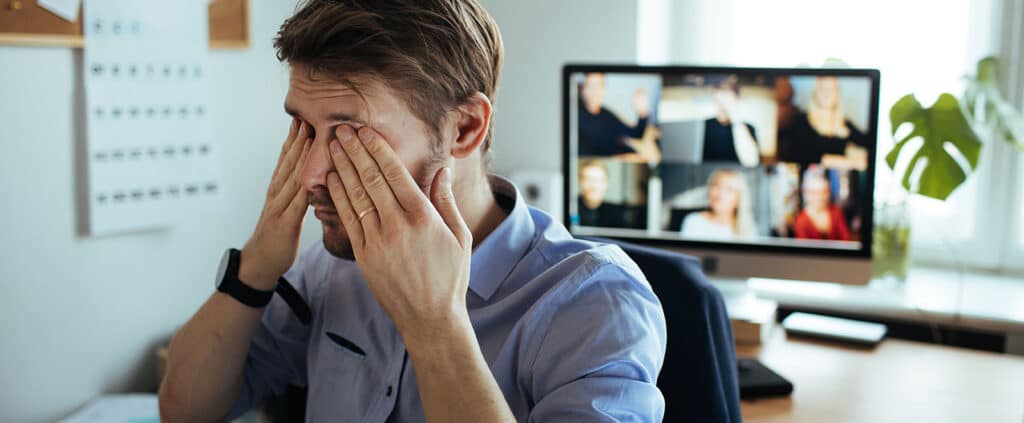Our digital devices are an increasingly intertwined part of our daily lives and routines. We may start the day perusing our notifications, spend the afternoon staring at our desktop in the workplace, and finish the evening with a social media scroll. The average Australian and New Zealander spend 5 hours per day on their phones alone. Technology provides many benefits and conveniences, but researchers believe this excess consumption comes at a cost to our mental and physical wellbeing.
Digital fatigue is a state of exhaustion and disengagement occurring after using digital devices for prolonged periods of time or navigating many devices at once. The significant amount of blue light emitted from these devices can interrupt sleep patterns leading to tiredness, eye strain, and damage. The long periods of time spent sitting can cause sore and stiff muscles, and the toll of virtual interaction and information overload can cause brain fog and difficulties concentrating.

Researchers have also pointed to the blurring boundaries of the workplace and home, where many take the demands of their career home with them on their devices and experience difficulties switching off.
In their journal article, ‘The Digital Burnout Scale Development Study’, Pinar Erten from Bingol University in Norway state that with the 24/7 access to our devices allowing for business after traditional work hours, many workers find themselves in a digital burnout they ‘are unable to stop’
“Irresistible information flow and constant accessibility are harmful to people’s health. The purpose of digital connection disappears, and stress increases”, Erten writes.
Digital fatigue has intensified since the beginning of the pandemic. One cause was the increased screen time in lockdown, which Dr. Lauren Arundell found to escalate by 26 hours in children per week, and 14 hours in adults.
“Excessive screen time in childhood increases the risk of obesity, cardio-metabolic disease risk factors, myopia, poor mental health, lower social skills, and school attainment, and lower social connectedness. Similar associations are noted amongst adults,” Dr. Arundell wrote.
The increased dependency on video conferencing tools to replace loss of face-to-face meetings led to the infamous ‘Zoom Fatigue’. A study using a sample size of more than 10,000 people to analyse the causes and impacts of this, found ‘nonverbal mechanisms’ to be responsible. These include the feeling of being trapped due to a lack of ability to move from the screen, hyper gazes from a grid of staring faces, and the cognitive overload of producing and interpreting nonverbal cues over video calls.

The study also found digital fatigue to impact women more than men, regardless of ways of use, background, or personality type. They noted that this is significant to understand due to existing inequities and the pressure it places upon women’s lives. Australian women engage in 30% more unpaid care work (domestic tasks such as cooking, cleaning, home maintenance, and childcare) than men a week. According to the McKinsey Institute, women are already experiencing unprecedented levels of general burnout in the workplace, almost double the rate of men. A separate study of working parents found that working Mums are 28% more likely than working Dads to experience burnout.
Several countries in Europe have enacted forms of ‘right to disconnect’ laws, establishing the right for workers to disconnect from work-related electronic communications after hours. Some are advocating for the introduction of similar laws in Australia and New Zealand to combat digital fatigue.

‘Digital detoxes’, defined as periods of time spent refraining from technology, are growing in popularity. Retreats are popping up around the globe, promising luxurious opportunities to recharge. However, escaping to the woods or tropics isn’t your only option to disconnect.
While we may not be able to escape our devices for work or social use, using offline channels and resources when we are able, can be a tool to reduce digital fatigue and reap the proven benefits of paper on comprehension and learning.
In the workplace, opt for old-school note-taking measures or print out some of your work to give your eyes a rest from your screen. Skip Netflix and switch off with a book instead. Working, thinking, and viewing the world in the ‘physical’ is a switch-off and balance we all need.







